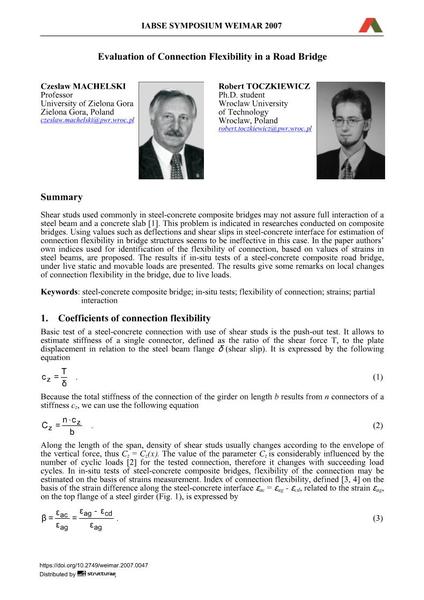Evaluation of connection flexibility in a road bridge

|
|
|||||||||||
Bibliographic Details
| Author(s): |
Czeslaw Machelski
R. Toczkiewicz |
||||
|---|---|---|---|---|---|
| Medium: | conference paper | ||||
| Language(s): | English | ||||
| Conference: | IABSE Symposium: Improving Infrastructure Worldwide, Weimar, Germany, 19-21 September 2007 | ||||
| Published in: | IABSE Symposium Weimar 2007 | ||||
|
|||||
| Page(s): | 508-509 | ||||
| Total no. of pages: | 8 | ||||
| Year: | 2007 | ||||
| DOI: | 10.2749/weimar.2007.0047 | ||||
| Abstract: |
Shear studs used commonly in steel-concrete composite bridges may not assure full interaction of a steel beam and a concrete slab [1]. This problem is indicated in researches conducted on composite bridges. Using values such as deflections and shear slips in steel-concrete interface for estimation of connection flexibility in bridge structures seems to be ineffective in this case. In the paper authors’ own indices used for identification of the flexibility of connection, based on values of strains in steel beams, are proposed. The results if in-situ tests of a steel-concrete composite road bridge, under live static and movable loads are presented. The results give some remarks on local changes of connection flexibility in the bridge, due to live loads. |
||||
| Keywords: |
strain in-situ test flexibility of connections steel-concrete composite bridge partial interaction
|
||||
